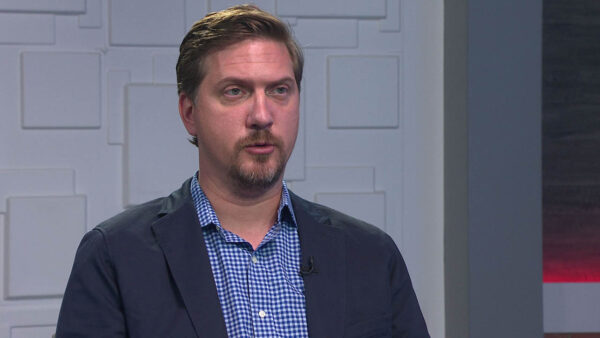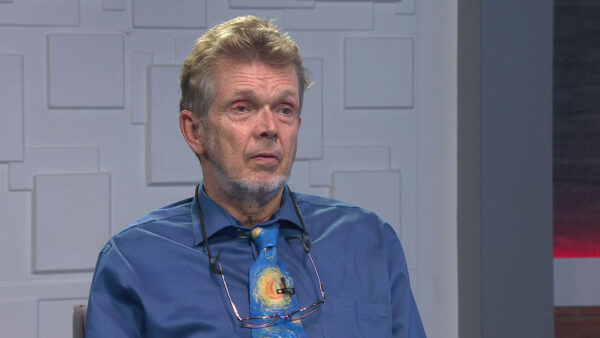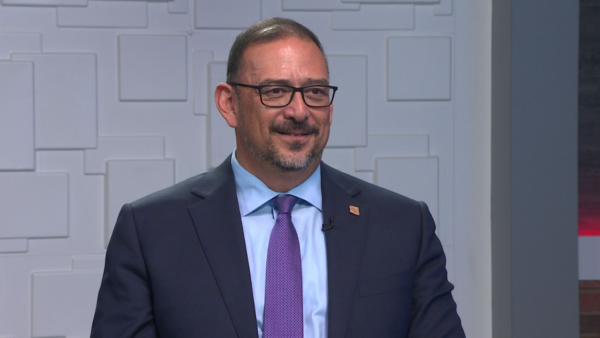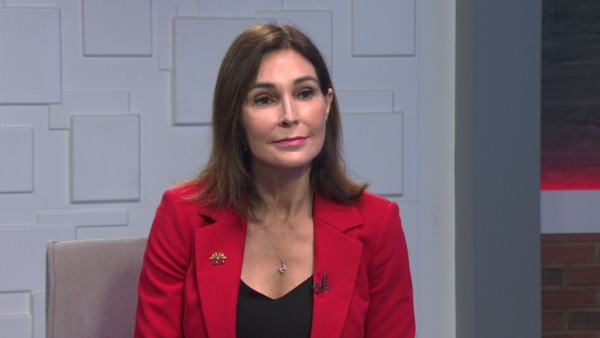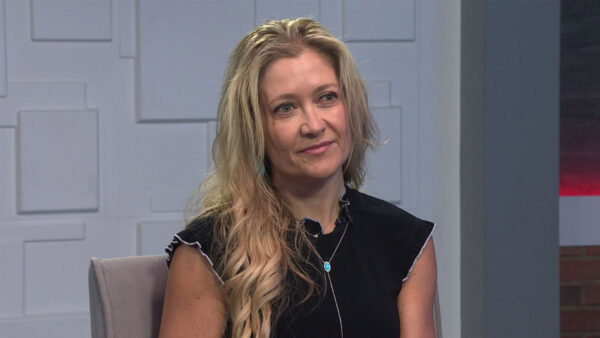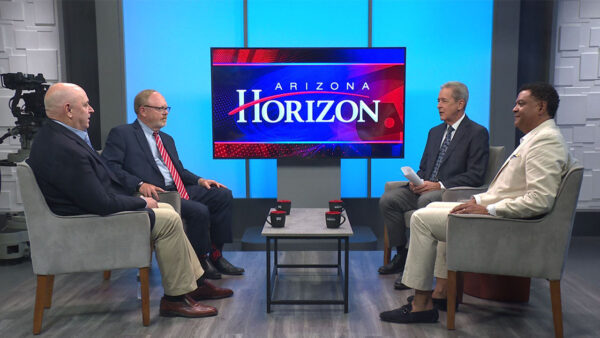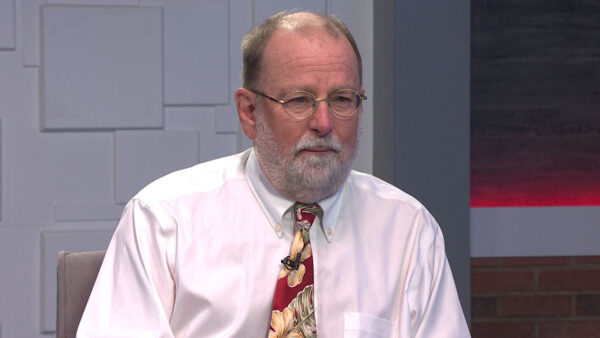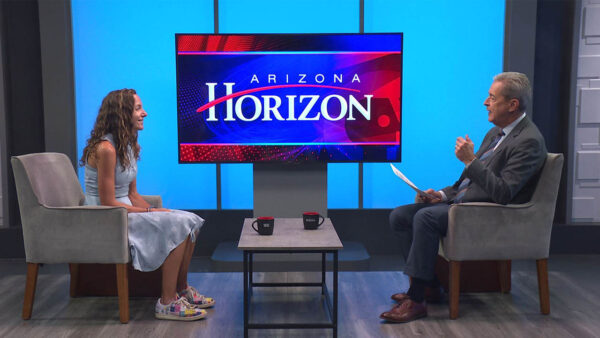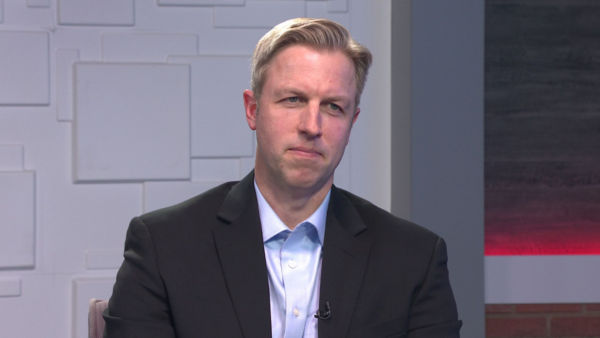A public forum will be held November 15th to consider the impact on water and energy users if expensive federal pollution regulations force the closing of the coal-fired Navajo Generating Station in Northeastern Arizona. Susan Bitter Smith, President of the Central Arizona Project’s Board of Directors, discusses the issue.
More information on the forum
Ted Simons: Pollution from the Navajo generating station has long been identified as a major source of haze at the Grand Canyon. The coal-fired power plant is in northeastern Arizona near Page. In the '90s plant owners invested around $400 million on scrubbers to cut sulfur dioxide emissions. Today they're installing technology to reduce haze forming nitrogen oxides at a cost of $47 million. But the environmental protection agency could require a more expensive method of cutting nitrogen oxides. If that happens, critics say the price of Central Arizona Project water could rise sharply. Here to talk about that is Susan Bitter Smith, chairman of the central Arizona project board of directors, and Rob Smith, senior field organizing manager for the Grand Canyon chapter of the Sierra Club. Let's start with you, Susan. The idea that new rules are needed to protect the environment. Valid?
Susan Bitter Smith: Actually not valid. The emission issue we're now trying to control is a visibility issue, not a health issue. It's actually steam that's coming now as a result of it having been installed. That does maybe mix with the clouds coming in from the L.A. basin over the Grand Canyon. But the visibility to the naked eye is minimal and the implications are huge in the state of Arizona.
Ted Simons: Let's get to those in a second, but let's start with the basics. Is the influence minimal?
Rob Smith: If you stuck your head down the smokestack you would die. This is toxic stuff coming out. The fourth largest source of nitrogen oxide in the country, and those are major power plants. To their credit, SRP, which runs the plant, did install the controls as part after legal settlement in the '90s. This is the other half, the law that requires this was passed in 1977. So it's been long time coming.
Ted Simons: But the idea that these new regulations could put the entire plant, the entire generating station in jeopardy, how do respond to that?
Rob Smith: That depends on whose numbers you use. Just today Arizona public Service company announced that they are making major changes, they proposed major changes at the four corners power plant, which is a major source much power for here in the metro area. Part of that proposal will be to agree to the exactly the same controls that are being possibly proposed here at the Navajo plant.
Susan Bitter Smith: Four Corners is a different issue. An older plant, that didn't already have the retrofit in place. What we're dealing with now is already been taken care of at the Navajo generating station. We're talking about a second layer of controls that go back to visibility issues, not health emissions. So Four Corners is a separate rule-making.
Ted Simons: The idea that folks on your side are just underestimating the benefit the as far as the environment is concerned, how do you respond to that?
Susan Bitter Smith: We aren't. We are serving to the public as well, and we're looking at all the possible outcomes. Navajo generating station has had those retrofits to deal with those health concerns. There have been several passes at that and there's still additional retrofits that have to go into place. But then to take the next level, the potential billion dollar retrofit and put that because there's steam emission coming in the CO2 side makes no sense to us.
Rob Smith: It's not about steam. Steam is water vapor, that's not what the EPA is seeking to regulate. The law doesn't require that. What you -- what is happening is there's a plume of nitrogen oxide that either moves across the four corners plant and adds to either acid rain or ozone formation in places as far away as Mesa Verde or blows into the Grand Canyon. And in fact it does degrade visibility, which is what triggers it. It also has health impacts. While that may not be technically what this rule is about, in fact, it creates asthma and lung problems if you breathe that.
Susan Bitter Smith: It is about steam. It is about visability, and what is concerning to us at the CAP level is the dominoes tumble and they're huge. Not only impact the cost of water to Arizonans, that impacts the cost of agribusiness survival in central Arizona and its survivability as an industry in Arizona. It also has impact to the Indian nations. It's a major employment source for the Navajos.
Ted Simons: The idea this could be an economic disaster if the plant can't handle these regulations. What do you say?
Rob Smith: The concern that Susan and the Central Arizona Water Conservation District have is with business decisions made by utilities like Salt River Project and APS, which are some of the owners here. They may be looking at a scenario where coal simply isn't worth it anymore, but in fact, in Arizona, investment in renewable energy solar plants would be the way to go. Simply saying no we're not going to do anything, I think ignores the fact the contribution these plants make to climate change and therefore drought as well at health impacts and we ought to be talking about what are the energy sources of the future that will create jobs there.
Ted Simons: Do you believe climate is being changed by things like the Navajo generating station?
Susan Bitter Smith: The Navajo generating station is not impacting climate change in the kind of effort that the EPA is attempting to resolve it W I would argue that in fact the CAP stance is one of survivability on water rates. We do have renewable supplies part of our portfolio and of course ultimately we will need to look at other additional kinds of supplies. But the Navajo generating station is 95% of our power source. And enough power and an affordable -- in a quick timetable is not a realistic situation. We're probably looking at a nuclear situation, which is 15 to 20 years away best case. So the Navajo generating station needs to stay in place, with the scrubbers that are in place to provide affordable and appropriate water supplies that don't deplete the groundwater charge area.
Ted Simons: We need to make clear, the water supplies, this is pumping water from the Colorado River to Phoenix and to Tucson. This power is needed, CAP is the --
Susan Bitter Smith: We have the largest single user of water in Arizona and water is going uphill in the CAP system and back down in the central valley. If the CAP goes away and we don't have power to supply it, many, many water users in Arizona have to use groundwater resources which here to for have been saved and stored for future use.
Ted Simons: Prohibitive costs using these resources, the idea that maybe solar panels over the canal which I believe a lot of folks thinks should be tried or looked at, may not be reasonable. Talk to us about that. Sounds like someone is seeing this and you're seeing an entirely different scenario.
Rob Smith: We use the numbers the utility provided, Salt River Project, to look at the cost to water. And for this pack of peanuts, costs about 2½ times as much as my water bill will go up in Phoenix. And we do use about half of our water in Phoenix comes from CAP. This is affordable spread over time. And spread over the millions of customers. So this is affordable to do. That's why APS is using the same controls. And in fact, a lot of the power that's actually in fact used to pump CAP water comes as nighttime extra power from the Palo Verde Nuclear Station. This is basically about finding a place to sell the power from Navajo. It's not about power supply.
Susan Bitter Smith: It's not a bag of peanuts. It's very, very serious. The cost of water could go up as much as four times. That means the cost of goods in Maricopa County, Pima and Pinal counties and the rest of the state can go up four to five times. And it means that the farmers who are part of our economic cycle in Arizona may either be out of business or depleting the groundwater that we need to have for future resources.
Ted Simons: That quadruple increase, is that a worst case scenario? A likely scenario.
Susan Bitter Smith: It's figures substantiated by a study commissioned to look at the reality. The utility providers and the CAP, which is not a utility company, would tell you it's much more severe, it's not a bag of peanuts, is it a serious, serious problems for ratepayers.
Rob Smith: The numbers are worse case scenario based on very high cost, worse case scenario perhaps of cost of controls, least economic -- least environmental benefit, and a series of things. It might -- no doubt water rates will go up a little bit, but in Phoenix we already pay less and use more than most every other city in the United States. So we have relatively cheap water and we use a lot more of it. Perhaps the investment if we're concerned about water supply should be in water conservation measures. That might be a better place to put money.
Ted Simons: Last question, is there room for compromise here? Where is the bar? Where is the level where you can go or where critics of this plan in general can go?
Rob Smith: Mother nature and the politics of the world in this country are moving towards controlling carbon emissions from coal plants. To simply say let's not do anything is not an option. But to take this opportunity and say, is there a better place to put our money, should we invest in renewable resources like solar, and put jobs on replacement jobs in the reservation would be a better solution.
Susan Bitter Smith: No one is saying we shouldn't address it no. One is saying we shouldn't be looking at renewables. CAP has renewables in our portfolio. What we are saying is that have you to be realistic about how quickly and how substantially renewables can be integrated into the portfolio and be reliable. That cannot be done overnight. This is a process that's going to require time and honesty and looking at it. And that's what ware saying to the EPA. We need time and some effort in looking at other kinds of energy sources that can be brought into the state of Arizona.
Ted Simons: We have to stop it right there. Good discussion. Thank you so much for joining us.
Rob Smith and Susan Bitter Smith: Thank you.
Susan Bitter Smith:President, Central Arizona Project;





